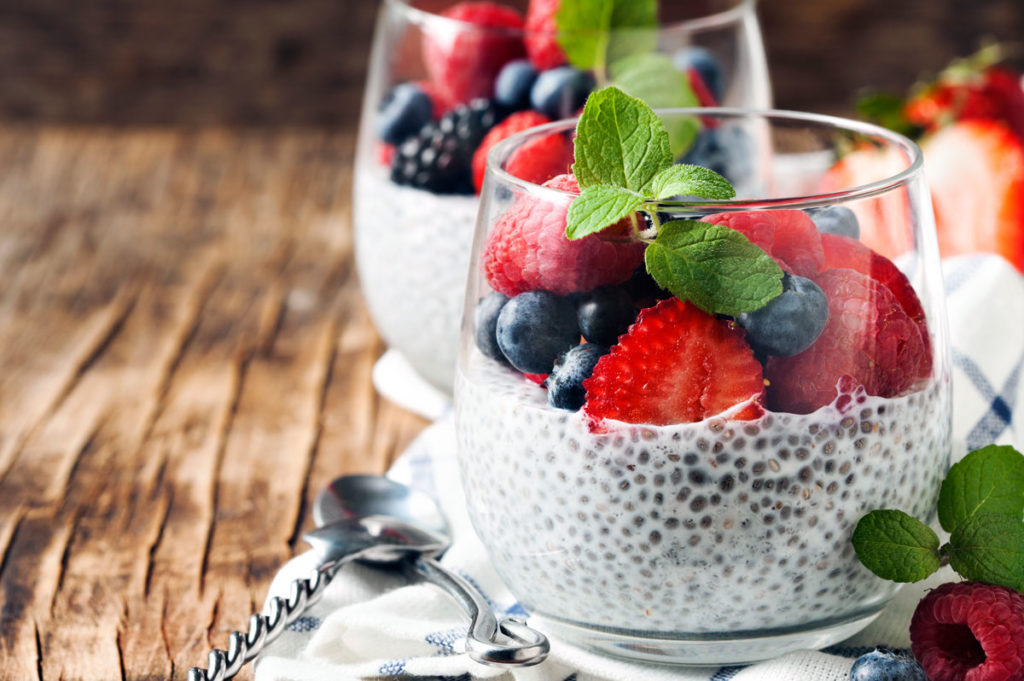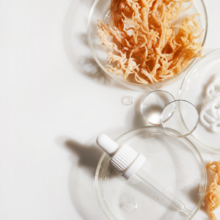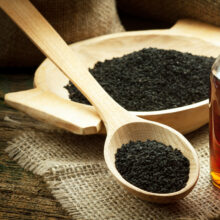The Superpowers of Chia Seeds
- Published: Friday, June 2nd 2017
- in Nutrition

Edible chia seeds are harvested from Salvia Hispanica, a flowering plant in the mint family native to Mexico and Guatemala, and have been consumed for centuries. (Aztec warriors were said to eat chia seeds for energy in battles, and it was a primary crop in central Mexico between 1500 and 900 B.C.[1]) In 2012, chia seeds gained popularity in the U.S. when nutritionists began reporting that these mighty seeds were a nutritional powerhouse, thanks to high levels of antioxidants, protein, calcium and fiber. The media took notice and a new superfood trend was born.
The benefits of eating chia on a daily basis are well documented, although some claims are iffy. But an important factor in its popularity is that just a small amount packs a big punch: one ounce of chia seeds (about two tablespoons) has just 137 calories and is high in nutrients, including high levels of calcium, that support bone health, and high levels of antioxidants, which fight the production of free radicals (thought to contribute to diseases like cancer).[2]
What we know
A two-tablespoon-serving of chia seeds contains:
- 11 grams of fiber
- 4 grams of protein
- 18% of the required daily amount (RDA) for adults of calcium
- 30% of the RDA of manganese
- 30% of the RDA of magnesium
- 27% of the RDA of phosphorus
- Plus, respectable amounts of zinc, vitamin B3, potassium, vitamin B1 and B2
- Chia also has just nine grams of fat, and five of those grams are Omega-3s
What we don’t know
- There has been a lot written about the theory that chia seeds support weight loss but studies do not support these claims. (The idea is that the fibrous seeds absorb a lot of water and expand in the stomach, making it feel fuller.)
- Chia seeds are high in the Omega-3 fatty acid ALA but some nutrition experts believe chia seeds are overrated as an Omega-3 source because we are not very good at converting ALA into DHA, the most important Omega-3 fatty acid.[3]
Organic or not
Chia seeds are usually grown organically and are non-GMO and gluten-free, but choose pure “certified organic” seeds as standards vary among countries. Some food experts say that very inexpensive seeds may be GMO and to be careful about buying seeds from China as they may be lower quality. [4] (This may be obvious but don’t eat seeds from a Chia pet–they are not meant for consumption!)
Most chia is grown in Mexico, South America and Australia,[5] and organic seeds are widely available at grocery and healthy food stores and online.
Eating Chia
Chia can be consumed in any meal or snack, any time of day, in almost every imaginable way. The seeds don’t need to be ground like flax, have a long shelf life, and are nearly tasteless so they don’t compete with other foods and spices. Eat them raw like the Aztec warriors; toss into a smoothie, tea, or lemon water; bake into breads or deserts; add to granola, oatmeal, rice dishes, veggies, and salad dressings; or stir into yogurt and cottage cheese. Chia seeds make a healthy addition to coatings on chicken and fish, and because they absorb water and fat, they can be used to thicken sauces or as an egg substitute in recipes.[6]
You can also make an easy and delicious pudding simply by mixing ¼ cup of chia seeds with one cup of almond milk or juice and adding your favorite spices and toppings,[7] and chia seed beverages like this Workout Smoothie are a cinch to make.
Workout Smoothie
2 tbsps. almond butter
1 large banana
1 tsp. chia seeds
1 tsp. cinnamon
Agave (optional)
1 cup coconut or almond milk
Blend & enjoy
One caution: chia seeds can interact with medications such as warfarin or Coumadin, so ask your doctor before adding to your diet.[8]
You may also enjoy “Your Guide to Super Seeds” and “The Benefits of Easting Ancient Grains and Seeds”
[1] DrWeil.com, “What is Chia?”
[2] AuthorityNutrition.com, “11 Proven Health Benefits of Chia Seeds,” by Kris Gunnars
[3] Ibid
[4] HealthyCreature.com, “Chia Seeds: Do Not Buy Without Reading This,” February 27, 2015
[5] USChia.com
[6] AuthorityNutrition.com, “11 Proven Health Benefits of Chia Seeds,” by Kris Gunnars
[7] Bon Appetit, “Everything You Need to Know About Chia Seeds and How to Eat Them,” by Christina Chaey, April 24, 2015
[8] ClevelandClinicWellness.com, “ Chia Seeds Supplement Review”



